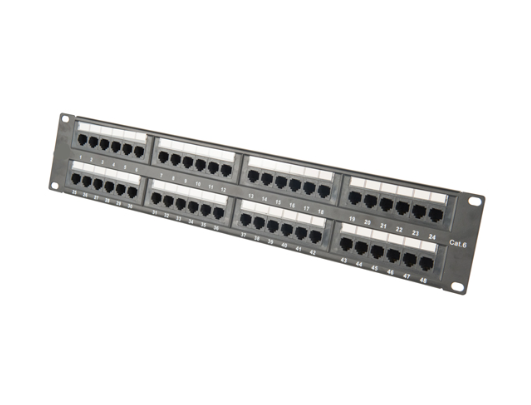News
Site Editor
 Site
https://leonetworkgroup.usa18.wondercdn.com/uploads/image/5fe152faa587d.png
Patch Ethernet cable is a type of Ethernet cable that is primarily used for creating a wired network connection. It is designed to connect one device to another, such as a computer to a router or switch. In the context of data transfer, a patch cable is distinct from a crossover cable because it is wire-to-wire, whereas a crossover cable is wired end-to-end. This article will explore the differenc
Site
https://leonetworkgroup.usa18.wondercdn.com/uploads/image/5fe152faa587d.png
Patch Ethernet cable is a type of Ethernet cable that is primarily used for creating a wired network connection. It is designed to connect one device to another, such as a computer to a router or switch. In the context of data transfer, a patch cable is distinct from a crossover cable because it is wire-to-wire, whereas a crossover cable is wired end-to-end. This article will explore the differenc
What Is Patch Ethernet Cable Difference
Views: 358
Author: Site Editor
Publish Time: 2023-07-12
Origin: Site
Patch Ethernet cable is a type of Ethernet cable that is primarily used for creating a wired network connection. It is designed to connect one device to another, such as a computer to a router or switch. In the context of data transfer, a patch cable is distinct from a crossover cable because it is wire-to-wire, whereas a crossover cable is wired end-to-end. This article will explore the differences between patch Ethernet cables and other types of Ethernet cables, the advantages and disadvantages of patch cables, and how to properly use them.
Differences between patch cables and other types of Ethernet cables
Patch cables differ from other Ethernet cables in several ways. One significant difference is the length of the cable. Patch cables are generally short, typically ranging from one to two meters. In contrast, other Ethernet cables, such as Cat5e and Cat6 cables, are usually much longer and can be installed as permanent fixtures in a network infrastructure.
Another difference between patch cables and other Ethernet cables is the type of connector used. Patch cables typically have RJ45 connectors on both ends, while other Ethernet cables may have different types of connectors such as RJ11 or even fiber optic connectors.
Advantages and disadvantages of patch cables
One of the significant advantages of using patch cables is their flexibility. They are easy to move around and can be quickly relocated to different parts of the network. This is particularly useful in situations where devices need to be moved frequently, such as in a server room.
Another benefit of patch cables is their affordability. They are generally less expensive than other types of Ethernet cables, such as Cat5e or Cat6 cables, making them an attractive option for smaller networks.
However, patch cables also have some disadvantages. They are not as durable as other types of Ethernet cables and are more prone to wear and tear. Additionally, the short length of patch cables can limit their use in larger networks or more extensive server rooms.
How to use patch cables
When using patch cables, it is essential to ensure that the cable is properly connected to both devices. The cable should be inserted firmly into the port, and the locking tab should be engaged. If the cable is not correctly connected, it may result in a weak or non-existent network connection.
It is also essential to use the correct length cable for the job. Patch cables are not designed to be used for extended distances and should not be used in situations where longer Ethernet cables are needed. Using a patch cable in a situation where a longer cable is needed can result in signal degradation and poor network performance.
Conclusion
Patch Ethernet cables are a valuable tool for creating wired network connections. They are flexible, affordable, and easy to use, making them an excellent option for smaller networks. However, they do have some limitations and should not be used for longer network connections where other types of Ethernet cables are needed. With proper usage, patch cables can help to create reliable and efficient network connections.
If you want to know more about industrial network cabinet,china fiber optic splice closure,china fiber optic distribution box,please consult the fiber optic splice closure factory









